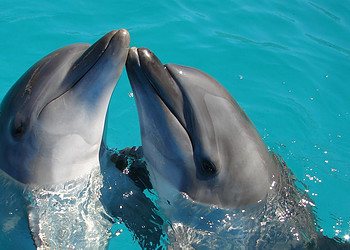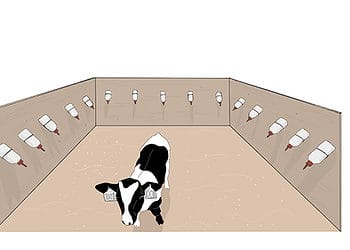
Bottlenose dolphin mothers are some of the most caring and nurturing moms in the animal kingdom. For years, they will feed, protect, and play with their young. But what even knowing this couldn’t prepare researchers for this unusual behavior: a bottlenose dolphin was spotted caring for an orphan male calf which belongs to a different species and genus of dolphin.
Researchers observed the dolphin mother along the coast of French Polynesia, along with one of her biological calves and an adopted male calf, which was later identified as a melon-headed whale.
Adoption was once thought to be a uniquely human trait. Then, in 2006, primatologists at the University of São Paulo were astonished to find a group of capuchins that were caring for a baby marmoset. Along with the bottlenose dolphin (Tursiops truncatus) mother, these are the only two documented cases involving the adoption of an orphan from a different species and genus. Most other adoptions among wild animals — which are very uncommon, to begin with — occur between related members of the same species.
Researchers at the Groupe d’Étude des Mammifères Marins (GEMM) de Polynésie filmed the dual-species family from all angles as part of a broader project designed to study a pod of around 30 bottlenose dolphins, which first began in 2009. After the orphan melon-headed calf (Peponocephala electra) joined the mother and her biological calf, he rarely left her side. The researchers were amazed to see the three of them constantly swimming side by side, an unusual sight since dolphin mothers are known to care for only one young at a time.
What’s more, the adopted calf was also successful at integrating himself in the broader pod. Writing in the journal Ethology, the researchers in French Polynesia said that the melon-headed whale youngster is now behaving like a bottlenose dolphin, regularly surfing and leaping into the waves just like any other dolphin young.
The mother proved to be remarkably committed to her newly adopted calf. The researchers documented how the two were spotted constantly together for nearly three years until the melon-headed whale suddenly disappeared in April 2018 — that’s around the time he would wean. The union lasted far longer than that between the mother and her biological calf, which vanished at one-and-a-half years old. On at least two occasions, the mother was spotted nursing her adopted calf, which is a huge sign of investment. For mammals, making milk is a very costly process so sharing it with not only an unrelated individual but one belonging to an entirely different genus, is truly amazing.
But, if this behavior on the part of the dolphin momma is so costly, why did she go through all of it? One possible explanation is that the orphan calf triggered her maternal instincts. In other words, the calf was in the right place at the right time since the mother was already receptive to forming strong bonds with her own offspring. The dolphin mother also has an accommodating personality, being known for uncanny tolerance for scuba divers in the area.
Lastly, to make the story even more impressive, it seems the melon-headed whale calf himself may have played an important role in the union through sheer, brute determination.
“We argue that the primiparous foster mother’s inexperience and personality may have contributed to factors driving such non‐adaptive behavior. We also propose that the adoptee’s persistence in initiating and maintaining an association with the adult female bottlenose dolphin could have played a major role in the adoption’s ultimate success, as well as the persistence of this cross‐genus adoption after the disappearance of the biological offspring,” the authors argued in their study.






